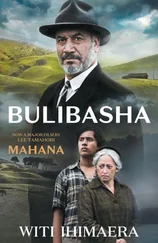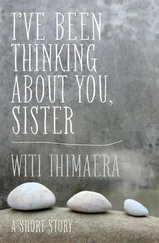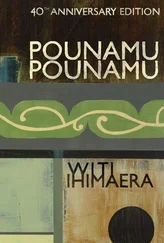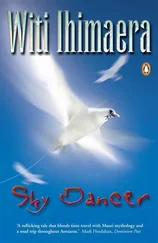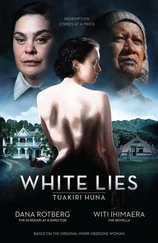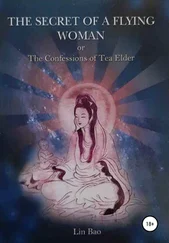One day she even heard other women of the village gossiping about her. ‘Why is she still barren when to even look at her husband would make any woman pregnant? Her mission education has diluted her ability to have children.’ It was spiteful talk and not to be taken seriously, but Erenora pondered her barrenness for weeks. Then she made up her mind. She prepared a good dinner for Horitana and, after that, sat him down for a talk. ‘I want you to divorce me, husband, and take another wife.’
He looked at her, puzzled. ‘What has brought this on?’
‘I have not been able to bear you a son,’ she answered.
He scratched his head, smiling. ‘It might be my problem, not yours,’ he began, ‘and anyway I love you. No other woman comes close to you. Apart from which, I would miss the clever, beautiful and sometimes puzzling things you say — and I like all our trying!’
Most of all, Horitana admired Erenora’s intelligent and questing spirit. Sometimes he would watch her on the marae without her knowing. He would see her eyes catch fire as the speakers rose, one by one, to talk about the future of Parihaka, of all Maoridom and Aotearoa. The cut and thrust of debate showed that the brightest minds were present at the many tribal meetings.
‘What is our kaupapa?’ they would ask. ‘What is our purpose? It is to protect the land and the people and maintain our way of life for future generations.’
At one such gathering, Erenora caught Horitana’s glance. She edged her way to his side and smiled at him. ‘You don’t mind my masculine interest, do you?’ she asked.
‘No,’ Horitana answered, ‘I’m proud of your enquiring mind, Erenora.’
Together they watched Te Whiti take command. The prophet never moved much, and his voice was so resonant and powerful that no matter how many people were there, it was as if he were speaking to each person alone. Well versed in kawa and korero, he was able to use a simple w’akatauaki, proverb or passage from the Book of Books, and it was enough to have people laughing or weeping or nodding in agreement. Assuredly he showed his rangatiratanga when he said:
‘I do not care for the parliament that meets in Wellington, my Parliament is at Parihaka.’
Oh, the thunderous ovation that greeted his remark.
One image of Erenora on the marae imprinted itself indelibly on Horitana’s memory. The day was waning, the debates between the chiefs reaching a climax. The night was pouring into the sky but there, silhouetted against twilight’s striated pinks and reds, was Erenora. Even as the darkness deepened into purple, and other women slipped away to prepare dinner, she still stood there, listening.
This was his wife. She was holding up the sky. She turned to him and smiled and the first evening star came out.
Aue, always hanging over Parihaka and Taranaki was that business about the confiscations which existed on paper .
The time came when the government did have the means to enforce confiscation on the ground. After all, there were already British and colonial positions along the coast from past campaigns; if you like, around the side of the breast — excuse me, Josie — from the armpit to the middle of the chest.
I’m talking about the era which began when Henry Albert Atkinson, known as Harry Atkinson, came to power as tenth Premier of New Zealand, albeit initially for only one year, from 1876 to 1877. In my opinion he was the worst of the land-grabbing leaders of our country. His curriculum vitae contained, for instance, a stint as one of the two captains of the Taranaki Rifle Volunteers formed from the settlers to defend New Plymouth when it was surrounded by Maori in the first round of the Taranaki fighting. He made no secret of the fact that he thought we were ‘savages’.
Then the period’s hostility to Taranaki Maori escalated when Sir George Grey, who had left New Zealand to serve as Governor of Cape Colony, returned and reinvented himself in New Zealand politics. He ousted Atkinson and took over as the eleventh premier, from 1877 to 1879. Under Grey, the government disclosed its hand: it rolled out its plans for the complete takeover of Taranaki, looking inward from the coast to that territory which Maori had claimed as theirs.
The moment had come for surgical removal.
You know, I think both sides were lucky that the resolution of land matters had moved from active military conflict between us. Otherwise, more blood would have been shed. One wonders why the government did not continue the conflagration?
I’ve heard that it simply couldn’t afford the cost of maintaining the British Army — the koti w’ero, redcoats, and the koti puru, bluecoats — in Aotearoa. And it has to be said that men of conscience, speaking within Parliament and without, put the brakes on any further fighting: were Maori not members of the brotherhood of man?
That, however, may have slowed Premier Grey down, but it did not stop him entirely. After all, he had the economic woes of the country to think about: 1877 was a year of depression in New Zealand, and what better way of solving some of the financial problems than by going after land that wasn’t yet in the Pakeha pocket? Like that interesting Maori territory in Taranaki. It could be worth up to half a million sterling.
And, by that time, the government had begun to institute a different kind of ‘army’: a heavily armed police force known as the Armed Constabulary, supported by settler volunteers.
The Grey Cabinet moved quickly to advocate the survey and sale of the land by force.
In July 1878 the surveyors, that perennial metaphor for provocation, were ordered in. What had once been a demilitarised zone now became active , and although the land’s ownership was still disputed, the Pakeha acted as if he owned it. Te Whiti and Tohu immediately protested, but the Crown went ahead with the surveying and then advertised 16,000 acres for sale.
Te Whiti took immediate action. After all, the ark was being assaulted.
CHAPTER SEVEN
What Was Wrong with a Maori Republic?
By the way, do you know the European artist Gustave Doré’s 1873 engraving called The New Zealander ?
It’s a somewhat surreal, dystopian illustration from London: a Pilgrimage by Blanchard Jerrold, and it shows a black-caped man looking upon that great city in the future, a London in decay, rotting and dying.
Christopher Woodward has an interesting interpretation of Doré’s engraving:
The wizard-like figure … is a traveller from New Zealand, for to many Victorians this young colony seemed to represent the dominant civilisation of the future. He sits on a broken arch of London Bridge to sketch the ruins of St Paul’s, exactly as Victorian Englishmen sketched those of ancient Rome . [7] Christopher Woodward, In Ruins: A Journey Through History, Art, and Literature , Pantheon, 2002, p. 5.
I’ve often pondered Doré’s engraving and Woodward’s commentary and wondered … what, if anything, would have made New Zealand that dominant civilisation? Sometimes, in my reply, it has been difficult for me to restrain my passion as I think of those first Pakeha leaders of ours.
If only they had come not to conquer but to partner Maori in some bold and innovative experiment which built on the making of a greater Britannia or Albion — call it what you will — here, on the other side of the world. Might not fabled Erewhon, a country created out of the legacies of two proud and fierce peoples — one Pakeha and the other Polynesian — have arisen to challenge Europa’s supremacy?
Just think what might have been , had that Victorian expectation referred to by Woodward been fulfilled, eh?
Читать дальше


